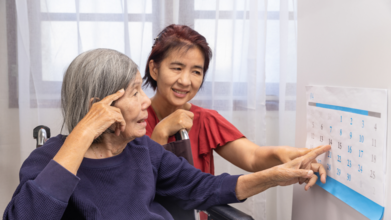- Health Conditions A-Z
- Health & Wellness
- Nutrition
- Fitness
- Health News
- Ayurveda
- Videos
- Medicine A-Z
- Parenting
- Web Stories
Why Do Some Cancer Patients Respond Better To Treatment Than Others? Answer Lies In Body’s Defense Mechanism

(Credit-Canva)
Our bodies work in mysterious ways, even if you see similar results in some people, there will always be exceptions. Cancer treatment is no different. Even though the odds are good for certain people, others cannot be as sure of how or what may happen during the process of treatment but why is that?
Powerful new cancer treatment, called immunotherapy, work incredibly well for some cancers but barely affects others. Now, scientists think they might know why, it turns out that tiny proteins in a patient's own body, called autoantibodies, seem to play a big role in how well these treatments work. These autoantibodies are usually linked to illnesses where the immune system attacks the body, like psoriasis or lupus. But this new research suggests they can also greatly influence a person's response to cancer immunotherapies.
How Autoantibodies Influence Tumor Shrinkage?
The study found that certain natural autoantibodies can significantly increase the chances of tumors shrinking. In some cases, these autoantibodies made it five to ten times more likely for a patient to respond positively to a type of immunotherapy called checkpoint blockade. This is a major discovery because it shows these naturally occurring proteins can have a powerful effect on treatment outcomes.
This research focused on immune checkpoint inhibitors. These are drugs designed to boost the body's natural ability to fight cancer. They essentially remove the cancer cells' "disguise" that allows them to hide from the immune system. While these drugs have completely changed how we treat many cancers, like melanoma and certain lung cancers, they don't work for everyone. Understanding why some patients respond and others don't has been a big puzzle.
Why Do Some People Respond Better To Cancer Treatment?
According to a 2020 study in the National Cancer Institute, researchers looked at ‘exceptional responders’ meaning people who respond exceptionally well to treatment while others don’t. Many of the patients in this study had advanced cancers that are usually very hard to treat, yet some of them saw their cancer shrink for many years.
The researchers found that for about a quarter of the patients (26 out of 111), the researchers found specific molecular features in their tumors that could explain their amazing responses. These features included unusual combinations of rare genetic changes in the tumor, or a high number of certain immune cells, like B lymphocytes, getting into the tumor. They also found that some people who had unusual changes in the BRCA1 or BRCA2 genes which are responsible for repairing the DNA, also influenced the treatment. These unusual changes meant the genes couldn’t repair the DNA, making the cancer cells vulnerable to treatment.
In other cases, the body's immune system played a big role in getting rid of the tumor. For example, higher levels of specific immune cells called B lymphocytes in tumors were linked to these great responses.
Another interesting find was that sometimes, due to a rare combination of genes, the treatment led to the death of tumor cells, this is called synthetic lethality, meaning that two non-lethal things combine and become a deadly combo.
Role of Autoantibodies in Cancer Treatment
The study revealed that cancer patients generally have more of these autoantibodies in their blood than healthy people. What's fascinating is that some of these autoantibodies were connected to better treatment results.
For example, certain autoantibodies acted like a shield, blocking a specific immune signal called interferon. When these autoantibodies were present, the immunotherapy drugs, like checkpoint inhibitors, were much more effective at attacking tumors. This makes sense because other research has shown that too much interferon can actually exhaust the immune system, making it less effective at fighting cancer.
It's almost as if some patients' bodies produced their own helpful medicine, neutralizing interferon and giving the cancer treatment a significant boost. This discovery provides a clear path for creating new combination therapies that could intentionally adjust the interferon pathway for all patients.
However, not all autoantibodies were helpful. Some were actually linked to worse outcomes. These likely interfered with important immune system functions needed to fight cancer. Future research will focus on finding ways to remove or block these harmful autoantibodies, which could improve immunotherapy for many more patients.
Dementia Timeline - The Average Time For Diagnosis After Symptoms Appear May Surprise You

(Credit-Canva)
Dementia, which is an umbrella term for cognitive degenerative conditions, affects millions of people. We have all seen articles and videos about early diagnosis and how important it is. However, getting it diagnosed as early as we hope is much more different in reality.
A new report published in the International Journal of Geriatric Psychiatry highlights a concerning trend: it takes an average of three-and-a-half years for a person to be diagnosed with dementia after their first symptoms appear. The study, which looked at data from over 30,000 people, is the first major effort to measure this delay.
Getting a timely diagnosis is extremely important. It gives people with dementia access to treatments and support earlier, which can potentially slow down the worsening of their symptoms. With new medications now available that can slow the progression of Alzheimer's disease in its early stages, an accurate and timely diagnosis is more crucial than ever.
Diagnosis Varies Among Different Groups
The study found that the time it takes to get a diagnosis is not the same for everyone. For people with early-onset dementia (which affects younger people), the delay is even longer, averaging just over four years. The research also linked a longer time to diagnosis to:
- Being younger when symptoms first appear.
- Having a specific type of dementia called frontotemporal dementia.
- In one of the studies, Black patients were also found to wait longer for a diagnosis.
Reasons for the Delays
Researchers have identified several key reasons why people wait so long to get a dementia diagnosis:
Mistaking symptoms for normal aging
Early signs of dementia, like forgetfulness or confusion, are often dismissed as a natural part of growing older. This common misunderstanding prevents many people from seeking a medical evaluation, leading to significant delays in getting a proper diagnosis.
Fear and stigma
The social stigma surrounding dementia causes many people to feel afraid or embarrassed. This fear can discourage individuals and their families from seeking help, leading them to avoid conversations with doctors and prolonging the time to diagnosis.
Issues with the healthcare system
Problems within the healthcare system, such as inefficient doctor referral networks, language barriers, and a lack of staff at memory clinics, also contribute to diagnostic delays. These systemic challenges make it harder for patients to get the timely care they need.
How Is Dementia Diagnosed?
After the initial evaluation, doctors may use a variety of specialized tests to confirm a dementia diagnosis and identify its type.
Cognitive and Neurological Tests
These are used to assess a person's thinking and physical abilities, including memory, problem-solving skills, and language. Imaging tests like CT, MRI, and PET scans are used to look for physical changes in the brain, such as tumors or strokes, and to observe brain activity. Psychiatric evaluation could also be done to
Evaluations and Other Tests
Psychiatric evaluations could help doctors determine whether a different mental health condition is contributing to these symptoms. In rare cases doctors could also recommend genetic testing for family history.
Cerebrospinal Fluid (CSF) Tests and Blood Test
A spinal tap can be performed to collect CSF, which is then tested for specific proteins that may indicate Alzheimer's or other types of dementia. Although they are not standard tests yet, blood tests have been created to measure levels of beta-amyloid which are associated with Alzheimer’s.
Plan for Moving Forward
To address this challenge, the study’s authors suggest a plan of action on several fronts. First, they recommend launching public awareness campaigns to help people better understand the early signs of dementia and to reduce the stigma associated with the condition. This would hopefully encourage people to seek medical help sooner.
Second, they emphasize the need for better training for doctors and other healthcare professionals so they can more easily recognize the symptoms of dementia and refer patients for specialized care more quickly. Finally, they stress the importance of providing better access to early intervention and support for people with dementia and their families, ensuring they get the help they need as soon as possible.
26 US States Are Witnessing A Spike In The New COVID-19 Variant Cases: How To Keep Your Kids Safe This Summer?

Credits: Health and me
As summer temperatures rise, so are COVID-19 cases across much of the United States. Data released by the Centers for Disease Control and Prevention (CDC) on July 18 shows that at least 26 states plus Washington, D.C. are experiencing a noticeable uptick in COVID-19 activity, especially in emergency departments.
This isn’t the first time COVID-19 has surged during the summer. Since 2020, the virus has followed a seasonal pattern, often spiking between June and August. What’s different this year is the emergence of two new variants nicknamed Nimbus and Stratus—descendants of the Omicron family—that appear to be driving the current wave.
According to CDC modeling, case trends are either growing or likely growing in more than half the country. The hardest-hit regions? The South and Southeast, including states like Arkansas, Kentucky, North Carolina, and Texas. Other states such as Illinois, Pennsylvania, and Virginia are also seeing rising trends.
In addition, the virus is likely growing in 16 more states, including California, Georgia, Michigan, New York, and Tennessee. Only one state Montana is currently seeing a likely decline.
One particularly concerning trend: a rise in COVID-related emergency department visits among children under 4 years old. Though the CDC emphasizes that overall respiratory illness activity remains low, this uptick among young children has raised red flags for pediatricians.
Dr. Kushal Agrawal, Neonatologist and Pediatrician, notes that “the virus might not be more deadly, but younger children are still vulnerable because of limited prior exposure and lower vaccine eligibility.”
What’s Fueling the Summer COVID Surge In US?
There are a number of explanations for the present summer peak in COVID-19 cases. One primary explanation is the development of new mutations—variants such as Nimbus and Stratus—that keep changing in ways that make them more contagious and able to evade immunity acquired through past infections or vaccines. Another reason is augmented travel and socialization. With most lockdowns relaxed, more individuals are spending time indoors, where there is air conditioning, and these are the perfect environments for the virus to be spread.
Moreover, pandemic fatigue caused a general reduction in the practice of wearing masks and other preventive measures, even in high-risk environments. Though it's comforting that these newer versions have not been associated with more serious illness—cough, sore throat, fever, and fatigue symptoms are still largely consistent with previous Omicron waves—the increase in cases is an unmistakable sign that we cannot become complacent, particularly when it comes to protecting children.
How to Keep Your Kids Safe This Summer?
With schools, summer camps, and playdates back in full swing, parents are understandably anxious. While most restrictions have been lifted, COVID is still very much around, and kids—especially those under 12—may remain vulnerable. Here’s how families can take action:
1. Don’t Ditch the Mask Yet
Even if mandates are gone, masks are still helpful—especially in indoor, poorly ventilated areas. Dr. Agrawal recommends, “Young children should wear masks in crowded places like malls or indoor play zones, particularly if they aren’t fully vaccinated.”
2. Prioritize Hand Hygiene
Frequent handwashing with soap or sanitizers (at least 60% alcohol) remains a cornerstone of infection control. Make it easy for kids by keeping sanitizer in their backpacks and reminding them to use it before meals.
3. Keep Sick Kids Home
It may feel like a hassle, but keeping kids at home when they have symptoms like cough, fever, or sore throat is crucial. This applies not only to COVID-19 but to other respiratory infections that tend to circulate in schools and daycare centers.
4. Improve Indoor Air Quality
Whether at home or in schools, proper ventilation can significantly reduce virus spread. Open windows, use fans, and invest in HEPA filters if feasible. Schools should prioritize classroom air circulation and filtration systems.
5. Stay Up to Date on Vaccines
This doesn’t just mean COVID shots. Flu shots and other routine immunizations help reduce overall illness, which in turn reduces strain on families and healthcare systems. The CDC still recommends COVID vaccination to prevent serious illness and hospitalization.
6. Mind Their Mental Health
COVID-19 isn’t just a physical health issue. Kids may feel anxious about getting sick or dealing with disrupted plans. Dr. Agrawal advises parents to “talk openly about their feelings, reassure them, and keep routines consistent” to create a sense of stability.
We’re not where we were in 2020. Vaccines, prior infections, and improved awareness mean the virus has less room to cause widespread chaos. But it’s not gone either.
Summer surges like this remind us that COVID-19 is still unpredictable. For families with young children, the goal should be to balance caution with normalcy. A few simple measures—masks in tight spaces, staying home when sick, hand hygiene can go a long way in ensuring kids stay healthy while enjoying their summer. As Dr. Agrawal puts it, “Let them learn, play and grow but do it wisely.”
Dr Kushal Agrawal, HOD, Department of Neonatology and Paediatrics, KVR Hospital, Kashipur.
No Time For Brain Decline - Lifestyle Habits That Reduce The Risk Of Dementia In Older Adults

The interesting thing about people is how unique everyone’s perspectives are. Everyone has their way of thinking, their own way of doing things as well as their own unique memories. These aspects make us human and set us apart from everyone. Can you imagine losing all of these because of a disease that robs you of your cognitive abilities? Dementia is not as uncommon as we think it is. Affecting millions, we are yet to find a cure for this disease. While researchers have identified risk factors, does changing them make any difference?
A new study asked an important question: Can making specific changes to our daily lives actually improve or protect our thinking skills as we get older, especially for those who might be at risk of memory problems or dementia?
Organized Efforts Work Better
This study involved over 2,100 older adults who faced a higher chance of their thinking skills declining. We compared two different groups over two years. One group followed a well-organized plan for healthy living. This plan included regular moderate to intense exercise, sticking to a special "MIND diet," doing activities that challenge the brain and encourage spending time with others, and regular checks on heart health. The other group got a less organized plan that they had to follow more on their own.
This was a big study where neither the participants nor the initial assessors knew which group someone was in. It took place in 5 different medical centers across the U.S. from 2019 to 2023. We included 2,111 people between 60 and 79 years old who weren't very active and didn't eat the best diet. To make sure we studied people truly at risk, they also had to have at least two other risk factors, like a family history of memory issues, heart problems, or just being older.
- Structured Group, who received a detailed, ongoing plan for exercise, diet, brain-challenging activities, social time, and heart health checks. They had more guidance and were regularly checked on.
- Self-Guided Group, who got general advice on the same healthy lifestyle areas but had less structure and fewer regular check-ins.
The main goal was to see how much a person's overall thinking ability changed each year over the two-year study. We used a combined score that looked at different brain skills like planning, remembering things, and how quickly their brain worked.
Results of the Study
Out of all the people who started, almost 90% finished the two-year assessment. Both groups showed some improvement in their thinking scores over time. However, the structured group's improvement was clearly bigger than the self-guided group's.
Interestingly, the benefits of the structured program were helpful whether or not a person carried a specific gene (APOE 4) linked to Alzheimer's risk. But, the structured program seemed to help those who had lower thinking abilities at the beginning of the study even more.
We also kept track of any problems or side effects. The structured group actually reported fewer serious and non-serious problems compared to the self-guided group. The most common health issue overall was getting COVID-19.
What This Means for You
The results clearly showed that the organized group had a noticeably better improvement in their overall thinking abilities. Their brain scores went up more each year compared to the group that followed the less organized plan. This means that having a structured approach made a bigger positive difference for their brains.
The findings suggest that if you're an older adult at risk of memory problems, a structured, more involved healthy lifestyle plan is more helpful for your thinking skills than trying to do it all on your own with less guidance. We still need more research to see how much these brain improvements affect daily life and if they last for many years.
It's really important to find ways to slow down or prevent memory loss that can lead to dementia. Things we can do in our daily lives, like changing our habits, are promising because they are usually affordable, easy to access, and safe. They offer a good way to protect our brains without relying on medicines alone.
© 2024 Bennett, Coleman & Company Limited

